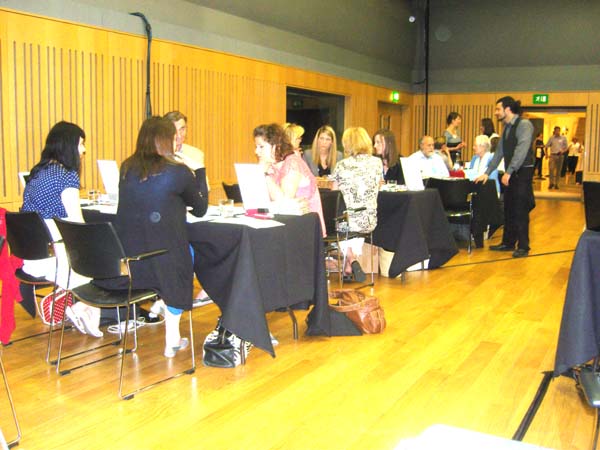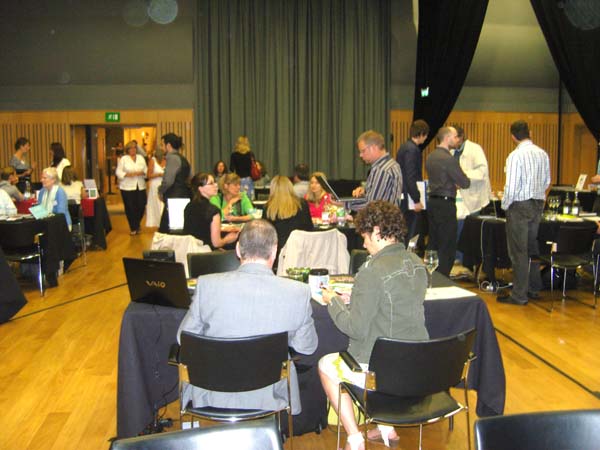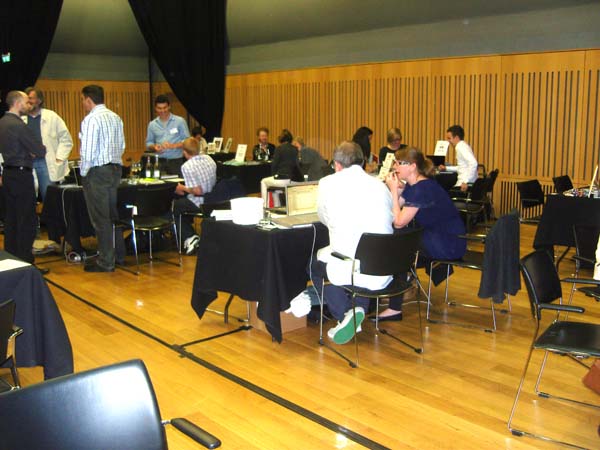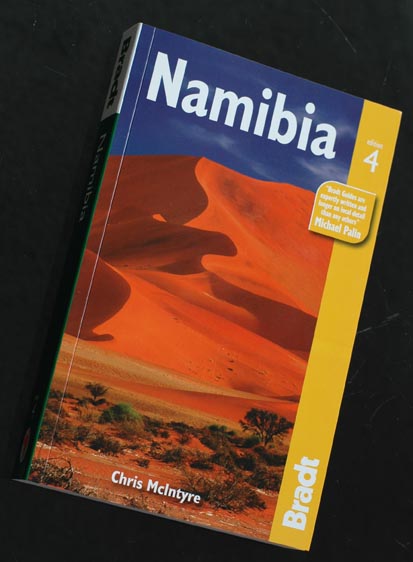Posts Tagged ‘picture sales’
Picture Sales & Website Traffic
May 24th, 2011by Gwyn Headley
Managing Director
Over the past year we’ve been working hard to build our website traffic on the simple belief that more visitors = more sales.
And it seems to be working. In the first three weeks of May we’ve sold images to seven different countries, all to new customers who have bought straight off our site. A very warm welcome to you all!
They’re not just small sales either. One was for over £400 / $635 / €458, and three others were in three figures. This is remarkably good, given the present state of the picture stock market, and as a result some of our photographers will be getting a pleasant surprise in a few days time.
We can’t help feeling this must have something to do with increased traffic to the fotoLibra website. On the Web ranking site Alexa.com, fotoLibra stands as the fourth most visited general picture library in the UK.
If this doesn’t sound great to you, remember there are over 450 picture libraries in Britain.
fotoLibra.com now ranks as the 110,000th most visited website in the world. Laughably low, I know, but just go to Alexa.com and input the URL of any small business you know. Then compare it with the fotoLibra ranking.
Surprising, isn’t it?
If you are a photographer, it makes commercial sense to post your images where more people will see them. And if a photograph is one of 500K, it will have more chance of being seen than if it’s one of twenty-five million.
I forgot to tell you about my last blog, Be Careful With Google Image Search, so here’s a link to it.
And if you wonder why we sometimes seem stressed and spaced-out, read my latest personal blog!
By the way, if you contacted anyone at fotoLibra in the last 10 days and haven’t heard anything back, please contact us again as we’ve been having an intermittent email problem which we hope is now sorted.
fotoFringe
May 12th, 2011by Gwyn Headley
Managing Director
There was no BAPLA Picture Buyers’ Fair this year. The lovely and redoubtable Flora Smith of Topfoto decided to do something about it.
With the help of Will Carleton of Photo Archive News she created fotoFringe. 55 picture libraries (curiously no Getty, Corbis or Alamy) piled into the plush King’s Place development on a highly gentrified canal basin at King’s Cross and prepared to tout their wares to the picture editors and researchers they hoped would attend.
And attend they did. I can’t speak for other picture libraries, but at the show yesterday we had 58 — count them, 58 — fruitful meetings. (We would have had more had not at least three photographers managed to evade the armed guards and got to chew the fat over a leisurely few hours with us while we agonisingly watched trains of real live picture buyers, weighed down with credit cards and price agreements burning holes in their handbags, steaming past us. There’s a time and a place etc etc and You Know Who You Are. No — we love you really. It’s just that we went there geared up to talk to picture buyers, not sellers.)
I can speak for other picture libraries, actually. There wasn’t a single voice of dissent. Everyone had a great day. It wasn’t expensive (except for all the bars of chocolate we handed out to picture buyers) and in terms of cost per head per meeting it was perhaps the most successful expo fotoLibra has ever attended.
Let’s do it again!
One interesting point (to me) is that 14 of our visitors had come to a trade show without bringing any business cards with them. Is it just me, or does that seem odd?
If you want to see more (and considerably better) images and read more about fotoFringe, here’s a link to Photo Archive News’s report for May 12. You can see fotoLibra’s stand and Yvonne’s and my cheery faces in the fourth image down.
Meanwhile my only quibble was that as we were in the second wave of bookings for the show along with 18 other picture libraries, our black felt-covered fotoLibra trestle table was placed below water level in the windowless basement. It was interesting to note people’s reactions to the space: the under 25s said “This looks like an exam room;” the 25 to 60s said “This looks like a gymnasium;” and the over 60s said “This looks like a morgue.” Ah, the preoccupations of age.
Here’s the stand when we set it up:

and here’s the rest of the room (or The Morgue, as my age group called it).



It really was a cheerful, positive, feelgood sort of event. Let’s hope this leads to more sales for us all.
Half A Million Images
March 14th, 2011by Gwyn Headley
Managing Director
First thing I do every morning is check the fotoLibra website to make sure it’s up and running.
Over this weekend I confess I’ve only shot a cursory glance at it because I have been immersed in rugby, exulting over Italy’s first 6 Nations victory over mighty France, delighting in Wales’s rule-breaking defeat of Ireland and secretly but vainly hoping Scotland might derail England’s remorseless progress to the Grand Slam.
So on a beery back-to-work morning I powered up my (now obsolete) MacBook Pro and went through the site. I checked the Home Page.
And double checked again.
We’ve gone past the half million mark. We have over half a million images on fotoLibra.
WOW!!
When fotoLibra was just a glint in my eye in 2002, I took Anne-Marie Ehrlich, the doyenne of picture researchers, to lunch. She said one couldn’t really take a picture library seriously until it had about 25,000 images. “No problem,” I scoffed, “we’ll have that many in five years, easy.”
And now here we are. We’re not the biggest picture library in the world — there’s the microstock rabble, and of course Getty, Corbis and Alamy (which has about 40 times as many images as we have) but I think we can say we’re now big enough to count. And our images are the images of fotoLibra members, not compilations of portals of images like the three I’ve just mentioned. With the largest image libraries, the same picture may appear from three or four different sources. I can’t say that never happens with fotoLibra, but you are more likely to find a unique image on fotoLibra than with most other image collections.
If you look at the rankings table in my last blog, you’ll notice that out of twenty leading picture libraries exhibiting at fotoFringe, fotoLibra has many more site visitors than any of the others — excluding the two celebrity stock agencies, because we don’t do slebs.
When I had the fotoLibra concept, I was forced to go ahead with it on the grounds that if I didn’t do it, someone else would. And I would have been kicking myself for the rest of my life. “I could’ve been a contender,” I would have been muttering thickly into my beard.
Well, now we’re contenders. Please raise a glass!
fotoFringe, May 11
March 11th, 2011by Gwyn Headley
Managing Director
Tags: 4 Corners, Alamy, Arcaid, Arenapal, BAPLA, Bridgeman, Camera Press, Corbis, Country Life, fotoFringe, fotoLibra, Getty, Heritage Images, Image Source, John Walmsley Education, marketing photographs, Mary Evans, Mirrorpix, Nature Picture Library, Photo Archive News, photography, Photoshot, picture library, Picture Research Association, picture sales, Robert Harding, Ronald Grant Archive, selling photographs, Specialist Stock, Splash, stock agency, Topfoto, View, WENN, Writer Pictures
When fotoLibra was just an ickle bitty new picture library we scraped all our pennies together and took a stand at the BAPLA Picture Buyers’ Fair. We thought it crucial that we should hang out our faces in public, and meet all those radiant people who would (we were convinced) shortly be buying shedloads of photographs from our wonderful members.
It hasn’t quite worked out like that, although we haven’t done too badly. We’re nearing half a million images online, which although it doesn’t yet match the behemoths of Getty, Alamy, Corbis and the microstock rabble, is still a respectable amount of superb images.
So it was with sadness that we learned that BAPLA would not be holding a Picture Buyers’ Fair this year.
Full marks therefore to the lovely Flora Smith of Topfoto who reasoned “If they’re not going to do it, then we will”. She hired a room and some trestle tables, called the event fotoFringe and invited a few friendly picture libraries to exhibit with her. “What a great idea,” I thought, and emailed Flora to say “Count us in!”
No room.
It was by invitation only, and she’d filled it already. 21 picture libraries, plus media partner Photo Archive News, will be exhibiting at fotoFringe — but not fotoLibra. We’re on the waiting list for a table, but we’re not holding our breath. Of course we’ll be there in person(s) (Flora said we could come), prowling round the room like hyenas and jackals, but we won’t be sitting at the top table.
Sleepless nights haven’t resolved the question of why Flora and Will Carleton of Photo Archive News didn’t think of us when choosing 20 picture libraries to exhibit with them (is it my tendency to dribble? my flatulence? my general nastiness?) but there we go. We will just sit on the sidelines and wait.
fotoLibra strongly supports the idea of fotoFringe, and hopes that every picture researcher worth her salt will attend, despite the formal absence of fotoLibra, Getty, Alamy and Corbis. There’s a website for the event at http://www.fotofringelondon.com, and it takes place on May 11th at the spiffy new Kings Place venue just north of King’s Cross. See you there!
One thing the fotoFringe website doesn’t do is link through to the exhibiting agencies’ websites so you can see what they offer, so as a service to picture buyers I thought fotoLibra could contribute that here.
And rather than list the libraries conventionally in alphabetical order, I’ve listed them in the order they appear on Alexa, the website ranking index standard, to see how close they get to Google, Facebook and Youtube. The lower the number, the more people visit the site.
Although fotoLibra isn’t exhibiting at fotoFringe, it would be invidious to leave my own company out of any listing. So here we go:
| LIBRARY | SPECIALISM | TRAFFIC RANKING |
| Wenn | Celebrities | 44,438 |
| Splash | Celebrities | 90,218 |
| fotoLibra | General | 149,195 |
| Image Source | General | 307,297 |
| Bridgeman | Art | 312,278 |
| Heritage Images | Heritage | 367,724 |
| Photoshot | General | 386,375 |
| Topfoto | General | 442,985 |
| Robert Harding | Travel | 581,251 |
| Photo Archive News | Trade News | 824,236 |
| Nature Picture Library | Nature | 940,390 |
| View | Architecture | 1,179,000 |
| Camera Press | General | 1,904,000 |
| Picture Research Association | Industry Body | 2,080,000 |
| Mary Evans | History | 2,138,000 |
| Arcaid | Architecture | 2,216,000 |
| Mirrorpix | News | 2,424,000 |
| Country Life | Heritage | 2,667,000 |
| 4 Corners | Travel | 3,590,000 |
| Specialist Stock | Environment | 7,590,000 |
| Ronald Grant Archive | Cinema | 8,012,000 |
| Arenapal | Performing Arts | 9,170,000 |
| John Walmsley Education | Education | 22,800,000 |
| Writer Pictures | Authors | no data |
Could the photos you take for fun make you money?
February 8th, 2011by Gwyn Headley
Managing Director
That’s the headline that greeted me when I opened the BBC Home Page just now.
I clicked on the link and I found this.
Mixed emotions, I guess. This is the drum we’ve been beating since we started fotoLibra in 2004, and the media — even the photo press — has steadfastly refused to listen to us.
In desperation we appointed a slick London PR agency, and last week they got us this great feature on the BBC Leeds website.
But the people who place the stories where it matters — on the BBC’s Home Page, for crissake — know nothing about us, despite our daily bombardment of letters, emails, flowers and phone calls.
They’ll write all day about American web sites, but they can’t believe that there’s a British company which would be doing as well as Flickr or Facebook or Picasa or any of the others if we could only receive the same level of international coverage. National exposure would be good. We’re even pathetically grateful for snippets of local coverage.
Facebook has had a movie made about it, already, So, fotoLibra: The Movie. I can see it all now. Obviously Brad Pitt would have to play me, Keira Knightley Yvonne, Daniel Auteuil would play Damien, Llinos’s part would be Uma Thurman, Graham is Colin Firth, and Jacqui? What about Quentin Tarantino?
Why was I looking at the BBC Home Page when I should have been working? Well, I hate to admit it, but we’ve had a little problem with the fotoLibra site, and although it can be seen and used, members and buyers can’t log in at the moment. There’s some sort of corrupted data table; we’re working to restore it and we expect the website will be up and running again by the time you read this.
Apologies if you’ve been affected by any of the issues raised in this blog.
Missing Member
February 3rd, 2011by Gwyn Headley
Managing Director
No, this is not a complaint I suffer from, but a situation has arisen at fotoLibra which we’d like to sort out.
Here’s a new title from the highly regarded travel publisher Bradt Guides, who publish guide books for Serious Travellers, not tourist lubbers like me.

Notice the cracking front cover image which fotoLibra sold them. It’s always good to get a front cover sale, not just for the money but also the prestige, especially by being associated with an imprint such as Bradt.
The evocative photograph of “Dune 45” was taken by fotoLibra member Tjaart van Staden. We emailed him the good news and he took it very calmly.
So calmly in fact that he didn’t respond. So we emailed him again. No reply.
We wrote to him. A real letter, with a stamp. No answer.
We checked his website. It had been taken down.
Now Tjaart van Staden is not a common name in Wales, but it may well be in Midrand, Gauteng, South Africa, where Tjaart abides — or abode.
We tried again and again, but we can’t find him.
So we can’t pay him.
I’m putting this blog up in the hope of tracking him down. If Tjaart ever succumbs to the old ego trip of Googling his own name, he’ll find this blog post and get in touch with us. But in case there’s a whole band of Tjaart van Staden impersonators out there, just be aware that a) there’ll be some questions asked to establish his identity and b) don’t put the deposit down on the Maserati just yet Tjaart, because the payment won’t cover it.
Hello, TJAART VAN STADEN, formerly of MIDRAND, GAUTENG, SOUTH AFRICA — please contact fotoLibra, where you will hear some news to your advantage!
2010 fotoLibra Pro Blog Index
January 17th, 2011by Gwyn Headley
Managing Director
This is the Index to the fotoLibra Pro Blog postings since January 2010, and a couple from this month as well.
If you’re new to fotoLibra, welcome! — and may we suggest you read through the HINTS & TIPS section, and if nothing else read Great Expectations from the 2009 blog. It still holds true.
In fact there are a lot of interesting posts in the 2009 blogs, and you can see an Index to them here.
Comments are welcome, even on old posts, and will be read and often responded to.
HINTS & TIPS
- What’s So Thrilling About A Parking Meter?
- What You Should Buy In Order To Sell
- Property Releases
- Model Releases
- 10 Hot Tips For Selling Your Photographs
- Mountains Into Molehills
- Why DPI Does Matter
ABOUT FOTOLIBRA
- Micro Royalties — A Clarification
- Micro Royalties
- fotoLibra’s Top Selling Categories
- fotoLibra’s Most Popular Subjects
- Mature Times
- New fotoLibra 4.1
- autoFocus
ADOBE
CUSTOMERS
E-BOOKS & PUBLISHING
IT
- Apple Mac Blues
- Up to 20 Mbps Broadband
- Where Does iPad Fit In A 3 Screens World?
- Chopped Pork & Ham
LAW
- Opening Up Stonehenge
- Stonewalling Stonehenge
- Guidance From The Met
- Privacy
- The Future Of Online Advertising
- Curious
MICROSTOCK
- Microstock: Why Would A Reputable Company Do This To Themselves?
- More Microstock Moans
- Selling Photographs Through Flickr And Getty
MISCELLANY
NETWORKING
PICTURE CALLS
Micro Royalties
January 11th, 2011by Gwyn Headley
Managing Director
We don’t need to tell you it’s a tough world out there economically, especially in the picture business. People are buying fewer photographs and paying less for them.
There’s an American photographer whose work I admire enormously. His name is Mike Yamashita and he shoots mainly for National Geographic Magazine. I met him a few years ago at the Frankfurt Book Fair when they built a large gallery showcasing his photographs in one of the halls at the fair. He had traced the footsteps of the thirteenth century Venetian explorer/ trader Marco Polo, documenting his journeys in a stunning series of images.
Great photographer through he is, Yamashita is not the most Pollyanna optimist you’re likely to meet. His glass is rather more than half empty. For some time he has been pronouncing with gloomy relish that “Stock is dead.”
Well, this is simply not true. The proclamation may have been triggered by three of his picture agencies closing their doors over the past year. What is true is that the old established market has been well and truly disrupted. Photo sales used to be the preserve of an elite few, many specialising in one field — jazz, aviation, cricket, ethnic populations — and because communication was twentieth century in its slowness, and photographs existed as physical, analogue objects, they had a scarcity value of their own.
Now of course — and fotoLibra is very much responsible for this shift — anyone can take and sell a photograph. Just before Christmas we were asked for photographs of specific situations in Kazakhstan. Twenty years ago this would have involved the buyer telephoning a series of picture libraries with the request. Each picture librarian would know, firstly, if they had photographs of Kazakhstan or if the buyer was barking up the wrong tree. If they did have pictures, they would charge a search fee to look through the files to see if there were any images that fitted the bill. If there were, they would be despatched in sealed clear envelopes to the client. If the seal was broken, the client would be deemed to have used the image, and would be charged accordingly. If the images were lost, which happened frequently, it would be simultaneously a disaster and a bonanza for the photographer — £400 for each lost transparency, for example.
Today fotoLibra has a number of photographers living in Kazakhstan. We can contact them instantly via email at no cost. One of them is an airline pilot by trade and a keen (and good) amateur photographer by inclination. He is on the spot, and can take precisely what the client wants. We supply the images to the client within the unfeasibly short deadline of 48 hours he has given us. There’s no special thanks — it’s what the client expects. Twenty years ago this would have been completely and utterly impossible.
We break our backs to provide an unsurpassed client service. It’s expected. But it’s still really hard to make a sale.
So we have devised a scheme to make more money for our photographers, with less outlay for our clients at the same time. Impossible? Having your cake and eating it? Barking at the moon? We don’t think so.
We want to make dealing with fotoLibra as easy, as painless and as simple as possible. But Simple and Easy are among the most difficult things to achieve well. Look at the simple Google interface. You don’t need to learn how to work it — it just works. That’s because a large fortune has been spent in making it simple. Underneath it’s very, very complex, like fotoLibra. If you buy a picture from fotoLibra, four simple choices take you to the price. Underneath that is a matrix of 1,447 price points. But you never have to see that. We’ve made it simple and easy.
And our new Micro Royalties initiative follows the same thought process. We want to sell more pictures. We want to pay our photographers more money. How do we solve this? We would move more images if we gave them away. But that wouldn’t benefit us or our members. How about this — instead of selling image rights for a flat fee, how about hire purchase? Deferred payment? Pay nothing now, and the rest over four years? That’s how they sell furniture. Why should pictures be different?
Here’s the plan. We can write a routine so that instead of publishers being billed for image usage in one great lump on publication, they are billed micro royalties six months after publication, when royalties become due. The amounts may be small, but they will come due again every six months. The image providers share in the success of a book. If it sells and sells, the photographer will earn much more for his photograph than if a straight sale had been made.
Of course our normal way of business will be dominating our trading for years to come. This Micro Royalties proposal is simply an alternative option, it’s only designed for book publishers which are one section of a picture library’s business. We don’t expect the take-up to be enormous, until people have tried it and found that it works for them. Maybe it won’t work for them at all. We’ve subjected the plan to all the various SWAT analyses, and we have pinpointed just one downside — if a book doesn’t achieve the publisher’s expected sales, then the photographer’s income will suffer. We’ll make adjustments to the percentages in the next sale to that publisher to allow for that. But this scheme is configured to appeal to the rapidly expanding, untested and as yet illustration-light eBook market, and the joy of eBooks from a publisher and author’s point of view is that they never go out of print. The drip may be small, but it is constant.
Picture libraries invented the Royalty Free image. They created Microstock. Neither of these plans favoured the photographer particularly — they were skewed in favour of the buyer. The creator of the image was outside the loop, the unwanted presence, the cow in the milk bar, the author at the book fair. This new fotoLibra plan rewards the photographer for his part in the success of a publication. If the writer gets royalties, why not the illustrator? The labourer is worthy of his hire.
No publisher has yet taken us up on this proposal, so we will be running a couple of experiments this year to test how easy this is to implement. Then we can tell them about it and demonstrate how it works.
We wish you a happy and profitable New Year.


